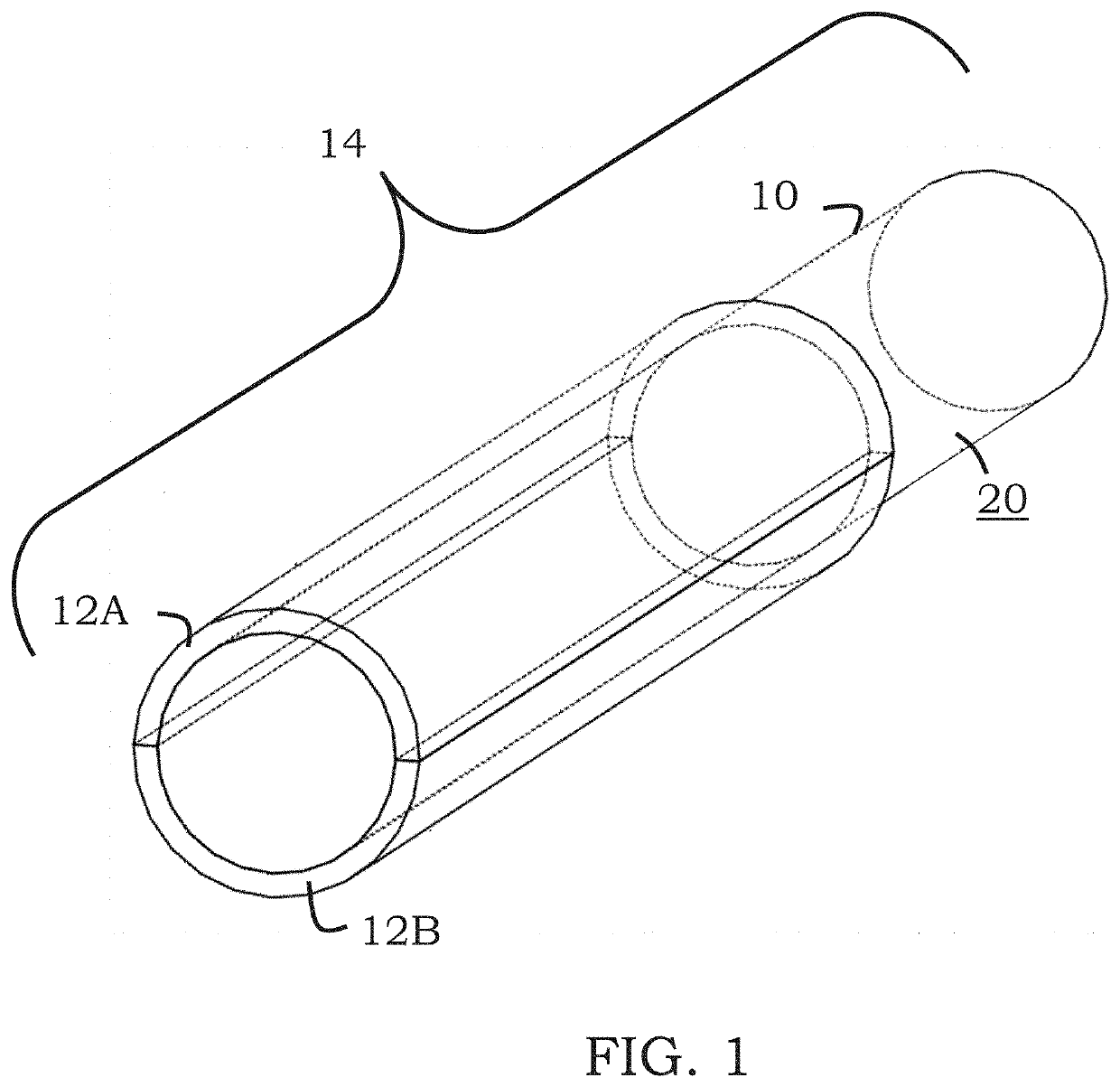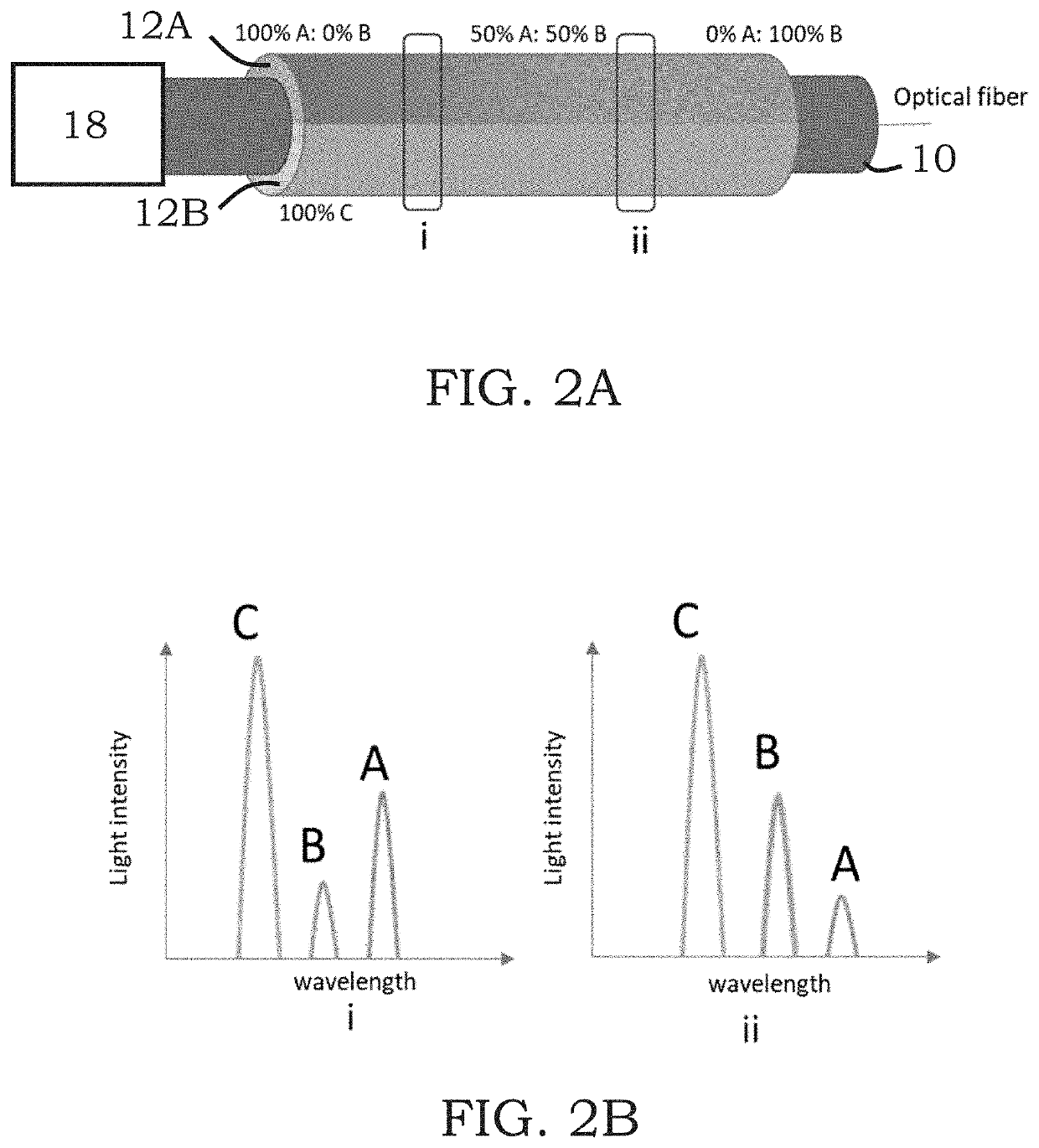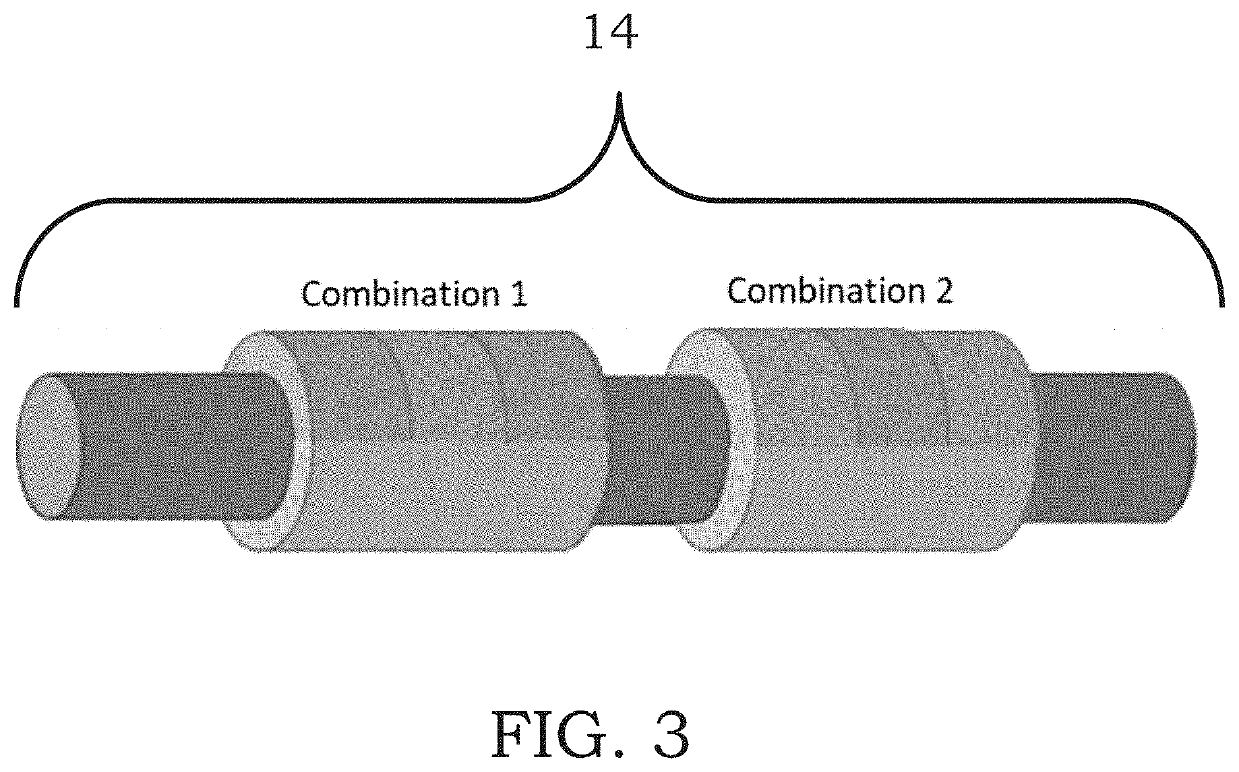Multiple-wavelength triboluminescent optical fiber sensor
a triboluminescent optical fiber and multi-wavelength technology, applied in the direction of optical apparatus testing, force measurement by measuring optical property variation, instruments, etc., can solve the problems of limited application to physical sensors, damage to the structure, and poor understanding
- Summary
- Abstract
- Description
- Claims
- Application Information
AI Technical Summary
Benefits of technology
Problems solved by technology
Method used
Image
Examples
Embodiment Construction
[0035]FIG. 1 depicts an optical fiber sensor for in-situ structural damage diagnosis with two or more triboluminescent materials covering outer surface 20 of optical fiber 10. Optical fiber 10 may then be embedded in target materials 16 to be structurally diagnosed. Damage to target material 16 under consideration may result in a triboluminescent emission of multiple wavelengths of triboluminescence resulting from crystal deformation or fracture.
[0036]Analysis of the triboluminescent emission provides information on the occurrence, severity, and location of damage within target material 16 in which triboluminescent sensor 14 is embedded. The use of multiple triboluminescent crystals allows the classification of the damage modes in a composite, such as compression and tension. This technology allows for real-time, distributed damage sensing and diagnosis upon the onset of barely visible damage.
[0037]Triboluminescent material 12, as depicted in FIGS. 1-4, is coated on a bare polymethy...
PUM
 Login to View More
Login to View More Abstract
Description
Claims
Application Information
 Login to View More
Login to View More - R&D
- Intellectual Property
- Life Sciences
- Materials
- Tech Scout
- Unparalleled Data Quality
- Higher Quality Content
- 60% Fewer Hallucinations
Browse by: Latest US Patents, China's latest patents, Technical Efficacy Thesaurus, Application Domain, Technology Topic, Popular Technical Reports.
© 2025 PatSnap. All rights reserved.Legal|Privacy policy|Modern Slavery Act Transparency Statement|Sitemap|About US| Contact US: help@patsnap.com



